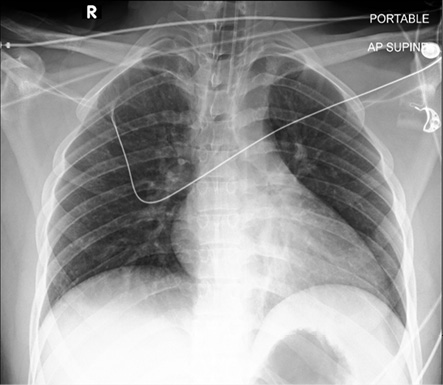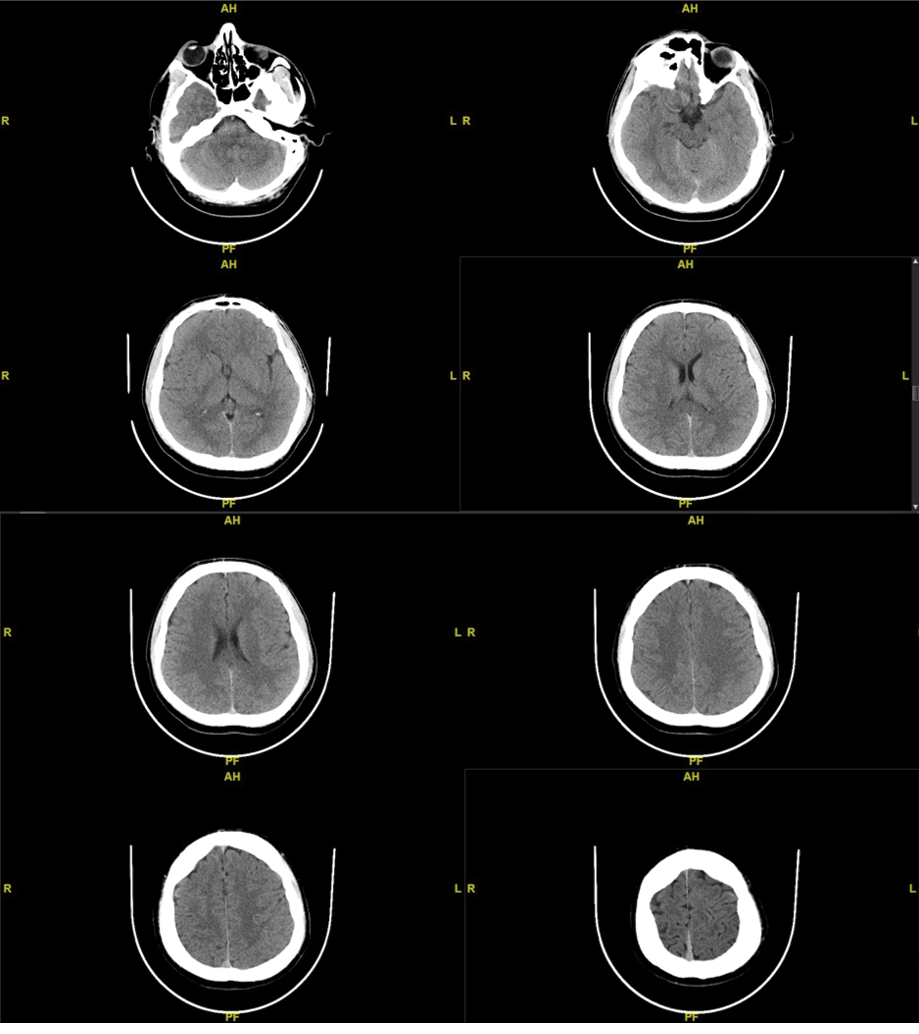Lagocephalus sceleratus, better known as the puffer fish (fugu in Japan), is a marine fish considered a risky delicacy in the Asia-Pacific region, while rarely consumed in the Arabian Gulf region. Puffer fish is a well-known source of deadly food poisoning as its internal organs contain tetrodotoxin (TTX), a potent neurotoxin, whose ingestion typically triggers a set of symptoms that include weakness, light-headedness, paresthesia of the face and extremities, nausea, and loss of reflexes. In severe toxicity, death occurs due to respiratory failure and cardiovascular collapse. In Japan, puffer fish dishes are required by law to be prepared only by a licensed ‘puffer fish cook’. Despite these precautions, hundreds of recent puffer fish poisoning cases and dozens of deaths have been reported from Japan and other East Asian countries in addition to stray cases from Bangladesh and the USA.1 Exact mortality rates are difficult to determine due to the rarity of cases.
TTX affects the human body by binding with sodium ion (Na+) channels and inhibiting the passage of Na+ ions resulting in immobilization of the affected tissues, particularly the heart myocytes, skeletal muscles, and the central and peripheral nervous system. Diagnosis can be confirmed through TTX estimation in blood or urine. Accurate medical history-taking is the cornerstone of making the diagnosis, especially where TTX level is below the detection threshold. The management of puffer fish poisoning essentially consists of supportive care. Management is based on continuous support till the toxin is excreted through urine. A few medication trials previously advocated have not been promising.
In the literature, we could not find documentation of any TTX poisoning cases from the UAE, which led us to report a case we managed. Though TTX has no established antidote, we used an anticholinesterase inhibitor for the present patient. Despite the paucity of studies dealing with the usage of anticholinesterase inhibitors to treat TTX poisoning, we believe its use may have helped our patient’s recovery.
Case Report
A previously well 19-year-old man with no significant past medical history was brought in with difficulty in breathing for thirty minutes. He had woken up with repeated vomiting, followed by difficulty in breathing. The emergency paramedic who reached the patient’s home found him initially awake, alert and oriented, with a patent airway, breathing adequately, and with no signs of bleeding. During assessment, he rapidly lost consciousness and became unresponsive. He became pulseless while shifting him to the ambulance. Cardiopulmonary resuscitation commenced in transit as per advanced cardiovascular life support protocol. Upon restoration of spontaneous circulation after two cycles of cardiopulmonary resuscitation, the patient was intubated. He arrived at the emergency room after 15 minutes.
On arrival, his vital signs were within normal range; oxygen saturation remained > 98% on mechanical ventilation. Central nervous system examination showed bilaterally dilated pupils measuring 6 mm, reactive and round, with glasgow coma scale at 3/15. Respiratory, cardiovascular, and abdominal examinations yielded non-significant indications. Random blood sugar was 8.7 mmol/L, and urine ketone result was negative. Electrocardiogram reported normal with no arrhythmia. Full blood count and electrolytes were within normal limits. Chest X-ray was unremarkable [Figure 1]. Computed tomography scan of the brain without contrast yielded unremarkable results [Figure 2]. The toxicology screen was also unremarkable. Arterial blood gas analyses indicated respiratory acidosis, with these readings: pH: 7.32; pO2: 99.8 mmHg; pCO2: 55 mmHg; and HCO3: 23.5 mmol/L.
 Figure 1: Chest X-ray shows unremarkable study.
Figure 1: Chest X-ray shows unremarkable study.
 Figure 2: CT scan of the head and brain (without contrast) shows a normal brain with no evidence of vascular insult or space-occupying lesions.
Figure 2: CT scan of the head and brain (without contrast) shows a normal brain with no evidence of vascular insult or space-occupying lesions.
After taking medical history from the family, we concluded that the patient ingested grilled puffer fish for dinner 20 before sleeping, which was confirmed by a photo of the fish. Gastric lavage was performed and activated charcoal was given.
The patient was shifted to the intensive care unit for close monitoring.
After the review of related medical literature, neostigmine, an anticholinesterase inhibitor, was considered. The patient started responding after two doses of intravenous neostigmine 2.5 mg. He regained consciousness after six hours and was extubated. The next day, he remained conscious, alert, and oriented, maintaining oxygen saturation on room air, and vital signs were within normal range. Central nervous system examination showed rounded, regular, and reactive pupils, with a glasgow coma scale of 15/15. His arterial blood gas normalized, with the following readings: pH: 7.46; pO2: 103 mmHg; pCO2: 35 mmHg; and HCO3: 24.5 mmol/L.
Upon transfer from intensive care unit to the ward, the patient had unsteady gait which improved gradually. He was discharged after three days. Later, he revisited the emergency department with a mild headache and dizziness; an magnetic resonance imaging yielded normal result. He was diagnosed with tension headache and analgesics were prescribed. During the one-month follow-up in the outpatient clinic, he was completely fine and free of symptoms.
Discussion
TTX is one of the deadliest natural toxins. In puffer fish, it is mainly concentrated in internal organs such as the liver, ovaries, and intestines. Washing, cooking, or other food preparation methods does not destroy the toxin. This neurotoxin has a direct central effect on the chemoreceptor trigger zone where it induces nausea and vomiting, in the respiratory center leading to depression of respiration, and may cause a drop in blood pressure by relaxing vascular smooth muscle and blocking peripheral autonomic nerves.2 TTX blocks Na+ conductance by binding extracellularly at the receptor site of Na+ channels. With Na+ influx blocked, action potentials hold off, and nerve excitability is suppressed.3
Clinical manifestations include headache, diaphoresis, body numbness, dysarthria, dysphagia, nausea, vomiting, abdominal pain, generalized malaise, weakness, and lack of coordination. In severe cases, hypotension, cardiac arrhythmias, muscle paralysis, and cranial nerve dysfunction may develop. Death may result from respiratory failure and cardiovascular collapse.4 The duration and severity of symptoms are determined by the quantity of TTX consumed, and usually the onset is 30 minutes to six hours after ingestion.1 In 1941, Fukuda and Tani introduced a clinical grading system for TTX poisoning [Table 1].5
Table 1: Clinical grading of tetrodotoxin poisoning as per Fukuda and Tani (1941).5
|
Grade 1
|
Perioral numbness and paraesthesia, with or without gastrointestinal symptoms (mainly nausea, vomiting, abdominal pain, and diarrhea).
|
5–45 minutes
|
|
Grade 2
|
Lingual numbness, numbness of face, and other areas (distal). Early motor paralysis and incoordination, slurred speech, and normal reflexes.
|
10–60 minutes
|
|
Grade 3
|
Generalized flaccid paralysis, respiratory failure, aphonia, and fixed or dilated pupils. Patient is conscious.
|
15 minutes to several hours
|
Diagnosis is usually made via history taking, clinical findings, and toxidrome. Dietary history is the key for diagnosis. In the absence of a positive history of puffer fish consumption or the detection of TTX in leftover food, determining the presence of TTX in the patient’s urine and/or plasma by mass spectrometry is essential to confirm the diagnosis. Studies have revealed that TTX remains in blood plasma for < 24 hours, but can be found in urine even on the fourth day after ingestion.6
As of now, there is no specific curative drug for TTX poisoning. The mainstay of treatment is supportive care, especially respiratory support, until the TTX is excreted in the urine. Within 60 minutes of ingestion of the toxin, giving activated charcoal and performing gastric lavage or inducing vomiting have been suggested to help in the management of TTX poisoning.7 Respiratory support includes endotracheal intubation in cases of salivation and respiratory secretions, and when respiration becomes shallow and dyspnea occurs. Ventilatory insufficiency due to respiratory muscle paralysis is a clear indication for assisted or controlled ventilation which can be life-saving. If patients with symptoms of severe TTX poisoning are promptly given adequate respiratory support, in addition to early diagnosis and supportive management, they usually recover completely,7 as our patient did.
Our patient had a grade four TTX toxicity as per Fukuda and Tani grading system [Table 1], and there was a drastic improvement in his status following the administration of neostigmine, an anticholinesterase. Based on the clinical responses of three TTX patients treated with anticholinesterase drugs in a study by Chew et al,8 it is likely that TTX causes a competitive reversible block at the motor end-plate as well as at the motor axon and muscle membrane. This blockage can be reversed by anticholinesterase drugs by increasing the quantal release of acetylcholine at the neuromuscular junction. Ahasan et al,9 showed that anticholinesterase drugs possibly enhanced the recovery process from muscle paralysis. However, evidence from case reports and case series cannot be considered sufficient to establish the utility of anticholinesterases against TTX poisoning.10
Another suggestion is to administer 2% sodium bicarbonate, as TTX is less stable in an alkaline medium. The amino acid cysteine was also reported to be effective in some cases of puffer fish poisoning.4 Though monoclonal antibody against tetrodotoxin (anti-TTX) is available, there are no published studies on its efficacy.1
In our patient, other causes of respiratory failure and cardiac arrest were ruled out based on the overall clinical picture and positive history of puffer fish ingestion. Because the patient had no previous history of hospitalization or emergency visits for abdominal pain, no prior history of fatigue and weakness, and no symptoms was reported at his follow-up visit, acute porphyria and myasthenia gravis were respectively ruled out.
Conclusion
This paper highlights the need for clinicians working in coastal regions to be aware of the rare presentations of TTX poisoning cases. Food and dietary history are vital, especially in young patients who may present with nonspecific neurological signs and symptoms after a meal. Even though there are no sufficient articles supporting the use of anticholinesterase drugs, our patient vastly improved after receiving it.
Disclosure
The authors declared no conflicts of interest. Informed consent was obtained from the patient.
references
- 1. Kotipoyina HR, Kong EL, Warrington SJ. Tetrodotoxin toxicity. 2021 [cited 2020 Aug 10]. In: StatPearls. Treasure Island (FL): StatPearls Publishing. Available from: https://www.ncbi.nlm.nih.gov/books/NBK507714/.
- 2. Lago J, Rodríguez LP, Blanco L, Vieites JM, Cabado AG. Tetrodotoxin, an extremely potent marine neurotoxin: distribution, toxicity, origin and therapeutical uses. Mar Drugs 2015 Oct;13(10):6384-6406.
- 3. Kiernan MC, Isbister GK, Lin CS, Burke D, Bostock H. Acute tetrodotoxin-induced neurotoxicity after ingestion of puffer fish. Ann Neurol 2005 Mar;57(3):339-348.
- 4. Yong YS, Quek LS, Lim EK, Ngo A. A case report of puffer fish poisoning in Singapore. Case Rep Med 2013;2013:206971.
- 5. Fukuda A, Tani A. Records of puffer poisonings report 3. Nippon Igaku Oyobi Kenko Hoken 1941;3528:7-13.
- 6. Leung KS, Fong BM, Tsoi Y-K. Analytical challenges: determination of tetrodotoxin in human urine and plasma by LC-MS/MS. Mar Drugs 2011;9(11):2291-2303.
- 7. Islam QT, Razzak MA, Islam MA, Bari MI, Basher A, Chowdhury FR, et al. Puffer fish poisoning in Bangladesh: clinical and toxicological results from large outbreaks in 2008. Trans R Soc Trop Med Hyg 2011 Feb;105(2):74-80.
- 8. Chew SK, Goh CH, Wang KW, Mah PK, Tan BY. Puffer fish (tetrodotoxin) poisoning: clinical report and role of anti-cholinesterase drugs in therapy. Singapore Med J 1983 Jun;24(3):168-171.
- 9. Ahasan HA, Al Mamun A, Rasul CH, Roy PK. Puffer fish poisoning (tetrodotoxin) in Bangladesh: clinical profile and role of anticholinesterase drugs. Trop Doct 2005 Oct;35(4):235-236.
- 10. Marcus EN. Overview of shellfish and puffer fish poisoning. In: UpToDate, Danzl, DF, editors. UpToDate, Waltham, MA; 2021.